Hawthorn
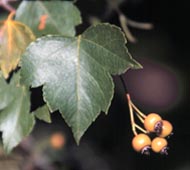
Leaf Characteristics
- broad, flat
- simple
- not lobed
- varied leaves
- branches with long, sharp thorns
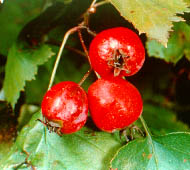
Fruit Characteristics
- other fruit (not cone, winged, acorn, or in pod or capsule)
- without husk or capsules
- loose, not packed tightly together
- fruit with pit
- whole fruit less than 1 inch
- fruit without strap-like modified leaf
- not like rasperries
- fruit not at end of single stalk
- leaves not modified
- round, red to orange
- 0.3" - 0.8" in diameter
- loosely clustered at ends of branching stalks
There are approximately 800 kinds of these small trees or shrubs in North America. Because of individual variations and frequent cross-breeding they are very difficult to separate into species. We will not attempt to do so here. A distinctive feature of this plant is the long, straight or slightly curved, sharp thorns that arm the twigs. The leaves are alternate and conspicuously toothed. But they vary in overall shape and are difficult to categorize. Some are slightly or deeply lobed, while others are without any sign of lobes. The small, apple-like fruit usually are red or orange in color. In some species, however, the fruit are black, dark blue, or yellow. Hawthorns seem to prefer alkaline soils, and are most abundant in limestone areas. They often grow on sunny abandoned fields and pasture. Taller, slower growing trees, however, shade them, suppressing their growth. The wood is without commercial value. For some people they are a desirable ornamental tree, while for others they are a weed of pasture land. A few large mammals, including cattle, sometimes browse on young growth. Various kinds of wildlife feed on the fruit.
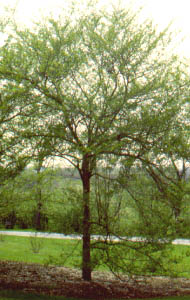 Tree Size
height up to 30'
Tree Size
height up to 30'
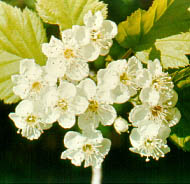 Flower
Flower
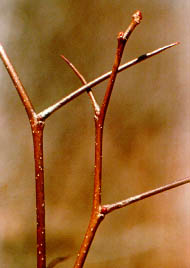 Twig and Buds
Twig and Buds 